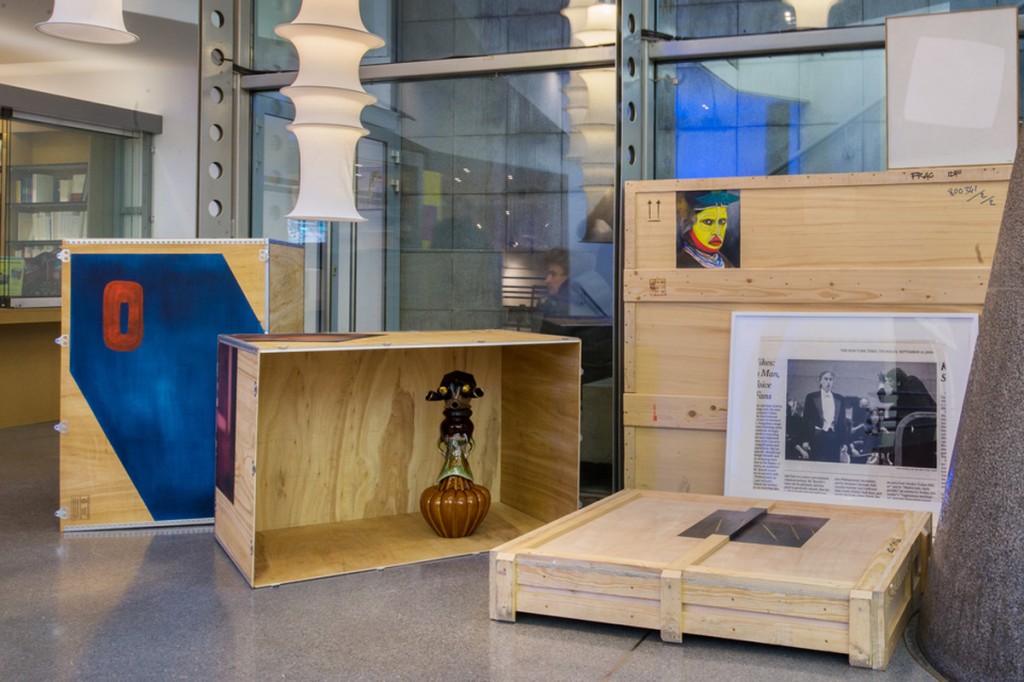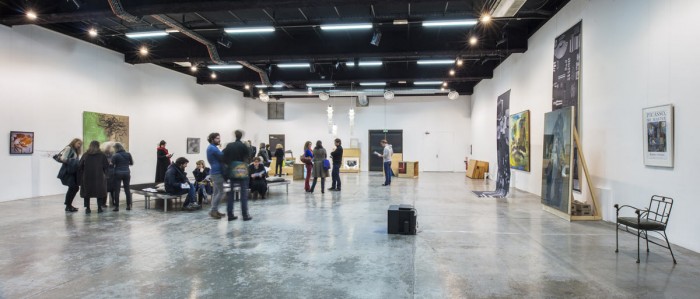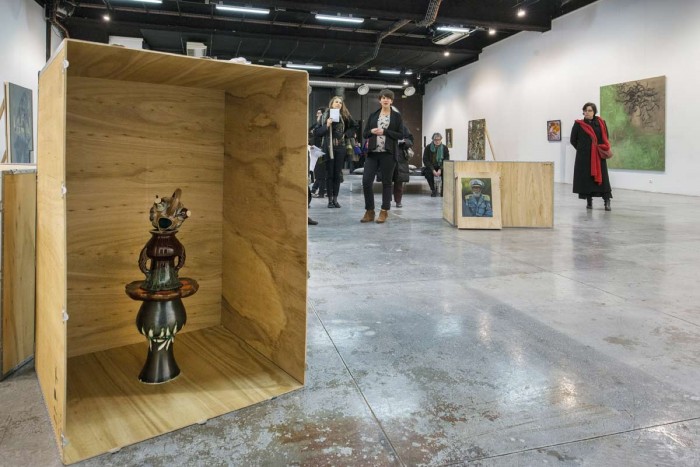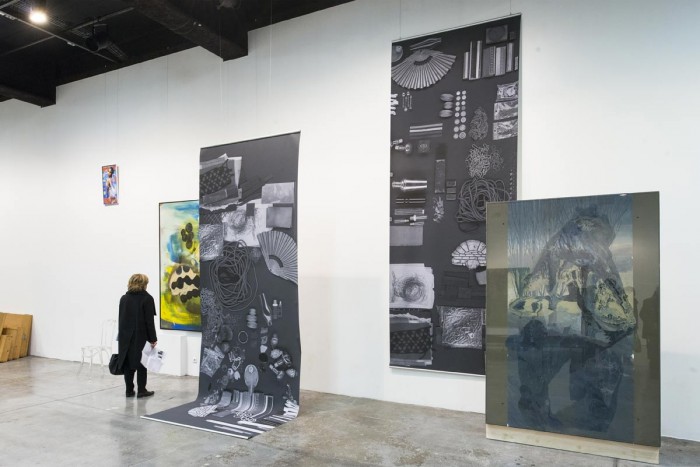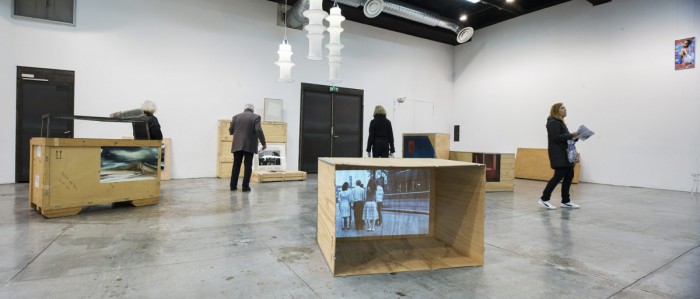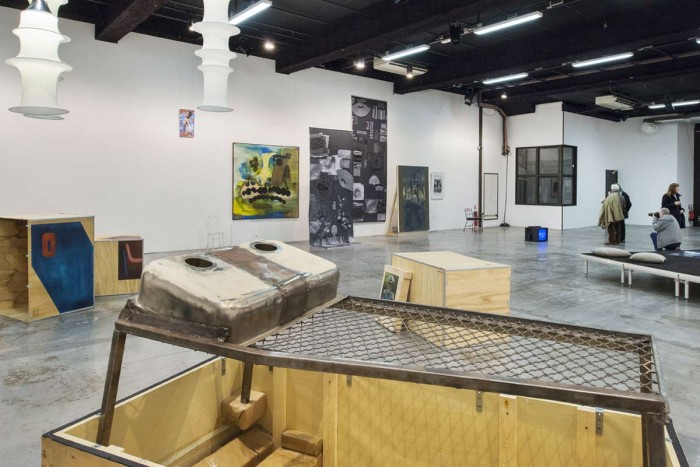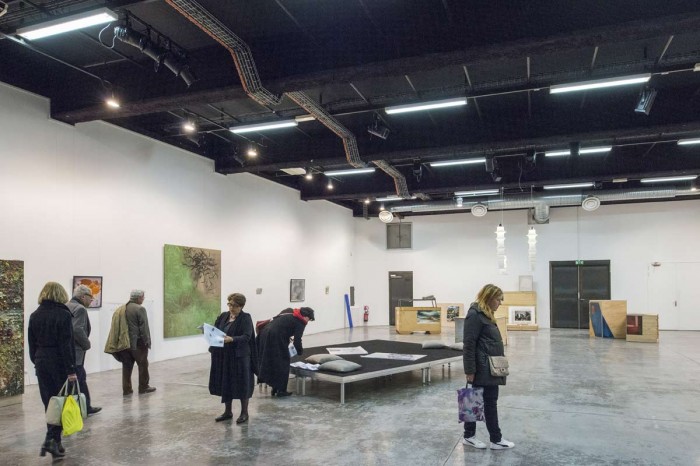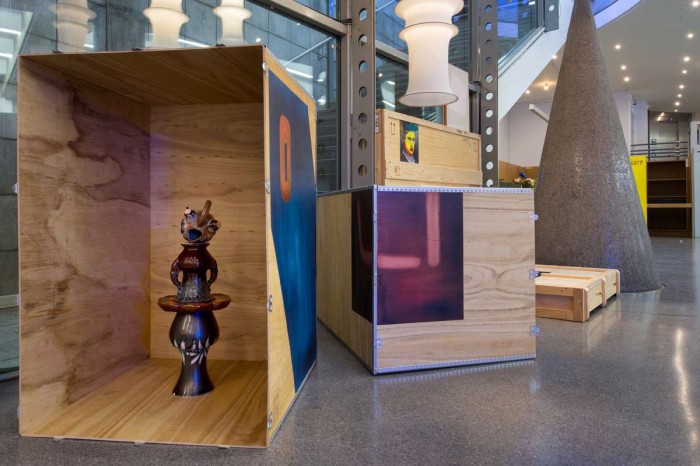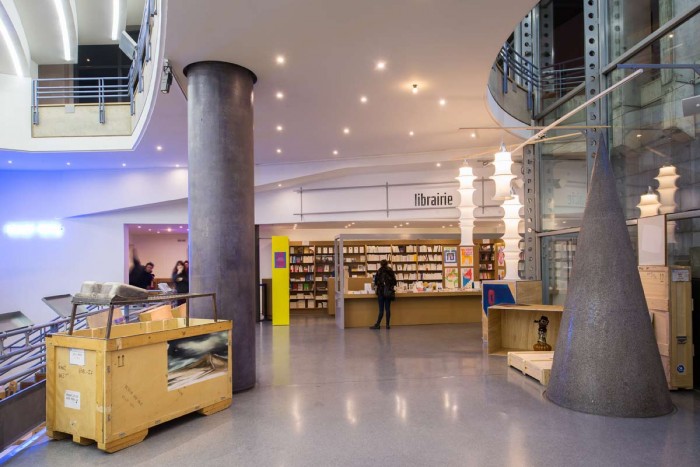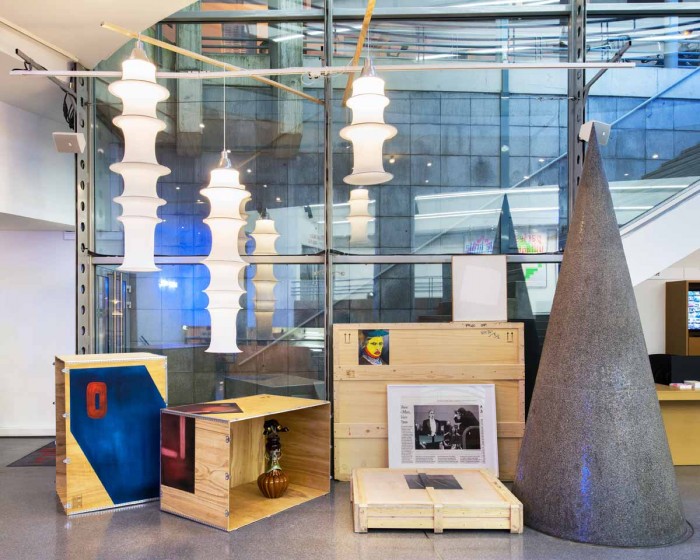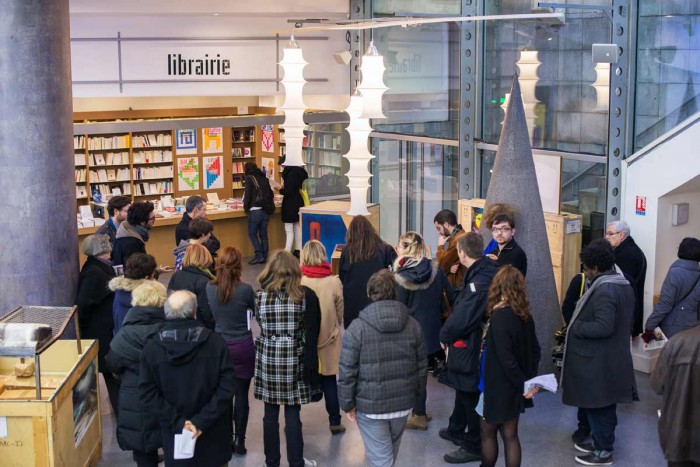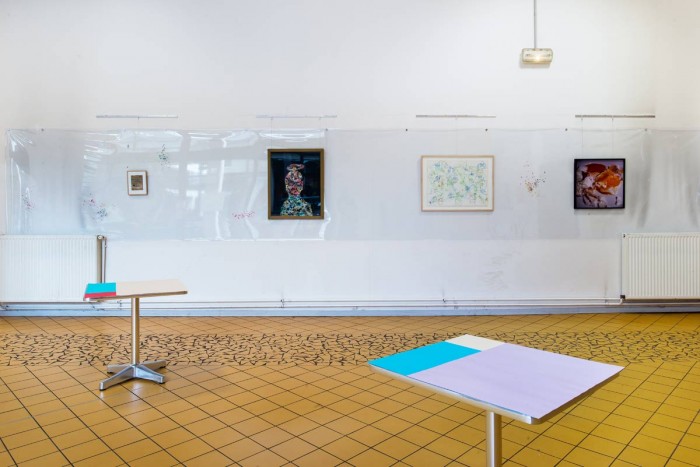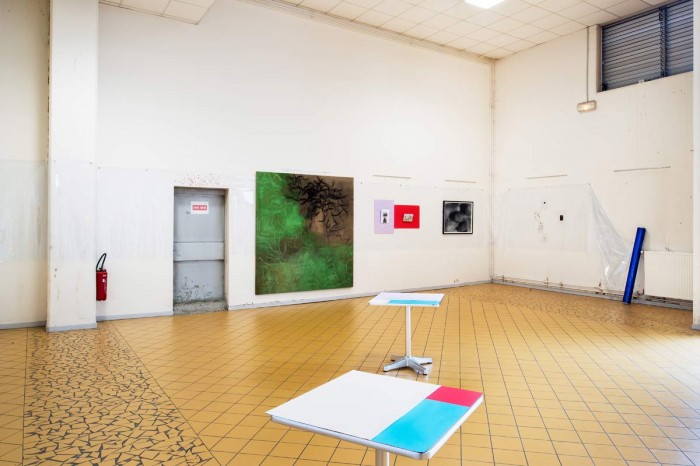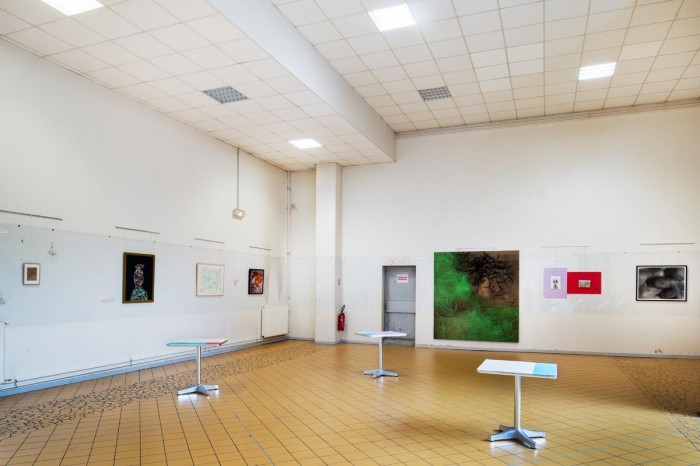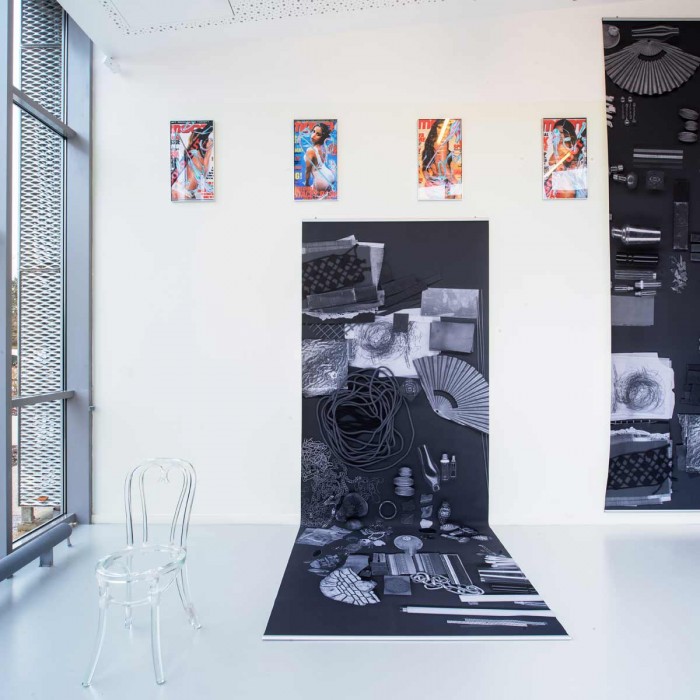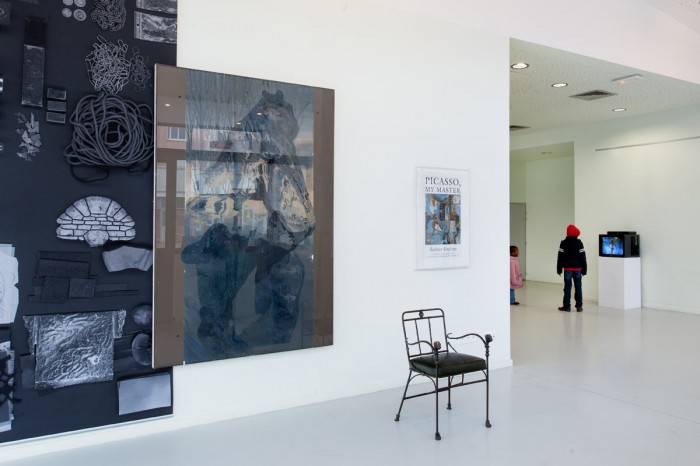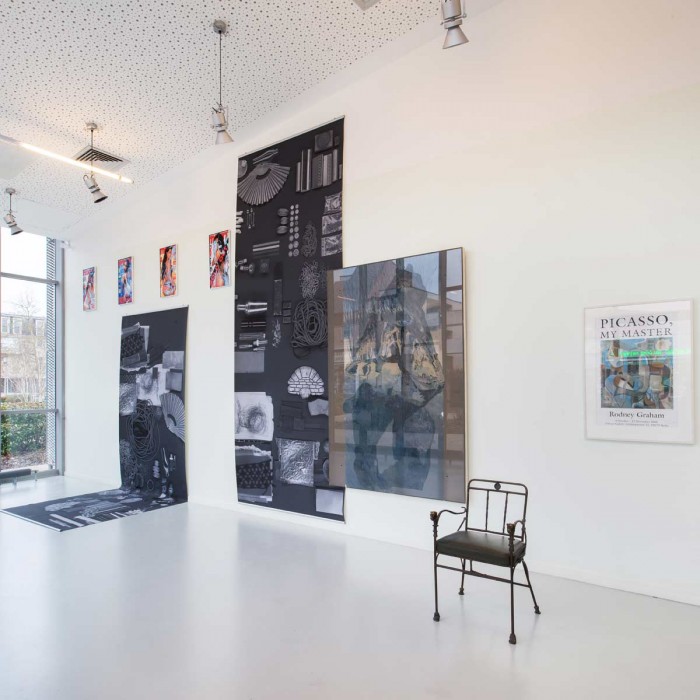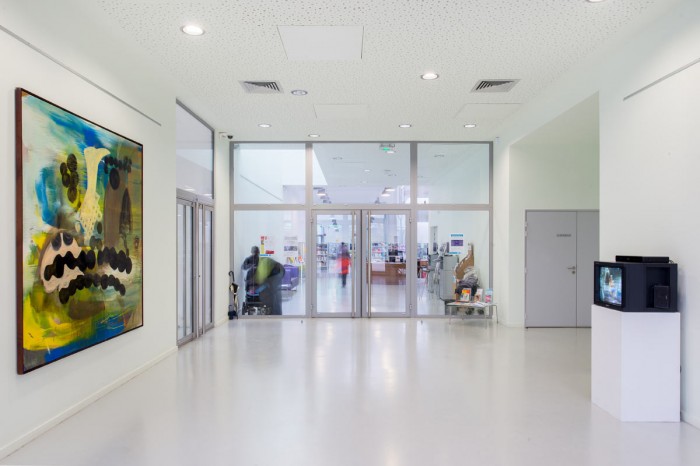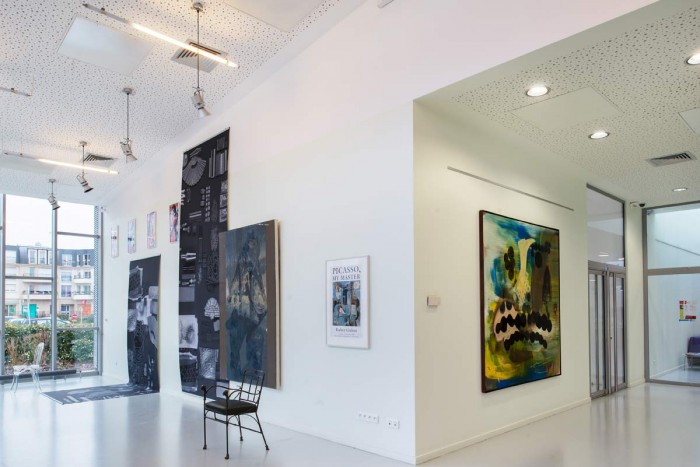Fourth tempo: presentation of the three movements
Le Générateur, Gentilly
8 and 9 February 2014
Exhibition programme curated by: Yoann Gourmel and Elodie Royer
En quatre temps, trois mouvements (In Four Tempos, Three Movements) is a travelling programme of exhibitions based on three moveable arrangements specifically designed by three artists – Romain Bernini, Isabelle Cornaro and Clément Rodzielski – to accommodate and create a dialogue between a selection of works from the Frac Île-de-France collection, echoing their respective artistic practices.
These three propositions, which are at once works and display apparatuses, are to be regarded as ephemeral, nomadic and autonomous galleries, capable of adapting to different contexts. All three question the ways in which works of art are displayed by revealing the links that tie them to their environment, and thus the way our perception and experience of them is influenced.
In playing with notions of décor and appearance, this programme tends to blur the lines between the works and their usual methods of dissemination and hanging.
En quatre temps, trois mouvements gives rise to four appearances in four different places in Paris and the Île-de-France region. Three have been allotted to each artist, while the fourth at Le Générateur in Gentilly brings the three together in one space.
First Movement: John Frum, with Romain Bernini, Théâtre National de la Colline, Paris, 7 and 8 December 2013
Second Movement: Fond de l’Illustration, with Clément Rodzielski, l’Université Paris XIII, Bobigny, 20 – 23 January 2014
Third Movement: Troisième mouvement, with Isabelle Cornaro, Médiathèque Colette, Lisses, 28 January – 1 February 2014
First Movement: John Frum
Théâtre National de la Colline, Paris
7 and 8 December 2013
With Romain Bernini
And the works of Maurice Blaussyld, Ulla von Brandenburg, Richard Fauguet, Joseph Grigely, Bruno Munari, Vera Pagava, Bruno Serralongue, Franz West
In an arrangement mixing the works with their transport crates, the John Frum exhibition, devised with Romain Bernini, conjures up the movements inherent in a collection, along with its exhibition, transit and storage time-frames. Taking as a point of departure the “cargo cult” of the aboriginals of Melanesia, Romain Bernini has made paintings on the crates, which mix the codes of classical representation (still lifes, landscapes, portraits) with the abstract motifs of this cult’s ritual paintings. These fragments painted straight on the crates trigger a narrative evoking the rites devised by the aboriginals in order to lure deliveries of manufactured products destined for the colonists and soldiers deployed in their territory during the Second World War, which they looked upon as a divine favour. Echoing this cult, the works chosen play on an ambiguity between container and content, between what is shown and what is hidden from the eye (Maurice Blaussyld, Ulla von Brandenburg, Joseph Grigely, Véra Pagava, Bruno Serralongue), and between the functional origin of their materials and their transformation into totems and fetishes (Richard Fauguet, Bruno Munari, Franz West).
Cargo cult
The “cargo cult” encompasses a set of age-old rites—appearing in the first half of the 20th century, and spreading in the early 1940s—as a reaction to the supply of manufactured products for the colonists and American and Japanese soldiers installed in Melanesia. For the aboriginal people who were incapable of imagining the origin of these objects and the way they were manufactured, these goods were regarded as gifts from the gods, sent by cargo planes and boats. In order to bring these offerings to them, they devised a set of rites and made false radio operators and false microphones, as well as landing strips which imitated in particular the techniques used by American soldiers for dropping these victuals by parachute. For Romain Bernini, there resides in this cult “a great beauty, and a poetry mixed with a tragic movement in the desire to borrow from a strange culture certain codes, so as to be able to take advantage of the same riches.”
The cult was adopted simultaneously in almost the whole of Melanesia, from Fiji to Papua-New Guinea. Nowadays the rituals endure on the island of Tanna, where “John Frum”, a symbolic figure of this cult, is regarded as a prophet. The possible origin of his name lies in the words of American soldiers during the Second World War, who introduced themselves as: “John from America”. For the inhabitants of the island of Tanna, John then commonly and conveniently described the white man. The places of John Frum worship are these days indicated by large red-painted crosses, identified by the aboriginals on certain vehicles and cargoes.
Second Movement: Fond de l’Illustration
L’Université Paris XIII, Bobigny
20 – 23 January 2014
With Clément Rodzielski
And the works of Karina Bisch, John Coplans, Monique Frydman, Jiří Kovanda, Eugène Leroy, Aurélie Salavert, Daniel Schlier, Yves Trémorin, Jan Voss
Because the background of the image is always already an image.
Serge Daney
For Fond de l’Illustration, Clément Rodzielski has used a background made of supple, transparent PVC set horizontally on the walls of the Cafeteria de l’Illustration at Université Paris XIII on which was affixed a selection of works evoking different types of surfaces and matter. The supporting wall was thus doubled by a new background on which the artist intervened by slipping in a bit of the “studio wall” which consisted of several collages and a few touches of paint, as well as coloured sheets of paper removed from their frames prior to being hung in this cafeteria. As reminders of backdrops on which were presented photographs recording student life, the coloured sheets of paper were also arranged horizontally on various tables.
At Le Générateur, this PVC background becomes a document, the artist having cut it up to make several transparent “large books” from it containing traces of his earlier work. All that remains on the wall is a fragment of this PVC, reminder of a cut made to provide a passage in the cafeteria.
Through these different interventions, Clément Rodzielski questions the way in which images are shown to us, and what surrounds and influences them, thereby examining their nature and their matter through the way they are placed in space. If the works chosen share in common a representation of fragments, close-ups and cut-outs evoking figures of floors, walls and open bodies, this is also so as to invite spectators to confront their own material nature.
Third Movement: Troième mouvement
Médiathèque Colette, Lisses
28 January – 1 February 2014
With Isabelle Cornaro
And the works of Art & Language, Dara Birnbaum, Diego Giacometti, Rodney Graham, Rita McBride, Albert Oehlen, Kelley Walker
For this third movement, Isabelle Cornaro has devised a canvas printed in two sections unrolling down to the floor, like a theatre backdrop, representing an enlarged detail, made in black and white, of one of her works in the series Moulages sur le vif (vide-poches). The objects represented in this series are arranged more or less methodically in categories on coloured backgrounds – household items, objects representing nature, landscape, and the economy, or connected with “making”, such as measuring and vision tools – before being scanned. Whether organized or left in disorder, these objects with their devalued aesthetic evoke a landscape on and around which is arranged a selection of works which mix the categories of the figurative and the abstract, the constructed and the shapeless, the decorative and the kitsch, questioning systems of representation (from painting to mechanical reproduction) and styles in art history.
